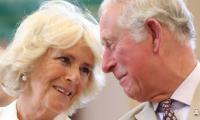KARACHI: The central bank on Friday raised its key interest rate by 50 basis points to 6.5 percent during the monetary policy announcement for the next two months to curb demand in an overheated economy fueled by fiscal expansion and deteriorating balance-of-payments position.
“The monetary policy committee has decided to increase the policy rate by 50bps to 6.50 percent effective from Monday 28th May 2018,” the State Bank of Pakistan (SBP) said in a statement.
The SBP said headline inflation remains moderate and is expected to stay well below the annual target of six percent mainly owing to low food inflation with the country “provisionally estimated to achieve a 13-year high level of 5.8 percent for FY18”.
Analysts said the central bank’s decision is line with the market expectations and the State Bank stepped in to this direction second time during the year. The central bank had kept policy rate unchanged at 6 percent in March, while it gently pushed up the rate by 25 basis points in January after keeping it on hold since May 2016.
“This is a right direction, but the central bank will have to do more to cut imports,” economist Hafeez Pasha said. “Only hike in interest rates won’t work alone.” The State Bank, however, said inflationary pressures are building up in the economy as average non-food-non-energy core inflation rose to 6.4 percent year-on-year during the last two months.
“A significant change in the outlook for international oil prices with its impact on upward adjustments in domestic oil prices, a strong demand, the lagged pass-through of exchange rate adjustments, food inflation maintaining its current course and the stoking of survey-based measures of inflationary expectations will largely determine the inflation path in the remaining period of FY18 and for FY19,” it added. “Conditional upon these developments, the average inflation for FY18 is projected to remain within SBP’s model-based range of 3.5-4.5 percent whereas the average FY19 inflation is estimated to be marginally above the annual target of 6 percent.”
The central bank said a sharp increase in international oil prices and limited financial inflows marred the balance-of-payments position despite an increase in exports and some deceleration in imports. In addition, significantly higher level fiscal expansion than previously anticipated revised up fiscal deficit estimate to 5.5 percent of GDP during the current fiscal year as compared to an initial target of 4.1 percent.
“These twin deficits-depicting the elevated aggregate demand in the country, are adversely affecting the near-term macroeconomic stability,” the SBP said. The central bank said the near-term sustainability of prevailing higher current account deficit critically depends on the realisation and further mobilisation of financial flows. The current account deficit widened to $14 billion during the first 10 months of FY18, which is 1.5 times the level of deficit realised during the same period last year.
“The need for deep rooted structural reforms to improve the country’s competitiveness can hardly be over emphasised for medium to long term sustainability of balance of payments,” it added.
Exports posted a strong recovery of 13.3 percent during the July-April period of FY2018, while workers’ remittances grew 3.9 percent during the period. Yet, the growing imports to support higher economic activity and the sharp increase in oil prices have pushed the current account deficit to a higher level.
“In the absence of sufficient projected financial flows, a portion of this higher current account deficit was managed by using country’s own resources during FY18,” the SBP said. “Consequently, SBP’s liquid foreign exchange reserves saw a net reduction of $5.8 billion to reach $10.3 billion as of 18th May 2018. Reflecting the increasing pressures in the external sector, rupee has depreciated by 9.3 percent against the dollar up till 24th May 2018.”
Zeeshan Afzal, executive director at Insight Securities said there is a need for more hikes in interest rate as pressure on current account is building up. “Pakistan is facing severe current account deficit with dollars obligations growing.”
Afzal, citing a ratings agency Moody’s report, said credit implications are more negative for countries with high external financing needs. Moody’s on Friday said countries with large current account deficits are particularly vulnerable to prolonged rise in risk aversion, which could see capital outflows that leave them with foreign reserve positions.
The SBP termed the growth target of 6.2 percent set by the government for the next fiscal year 2019 as “ambitious” as it would “critically depend on managing the growing pressures on the external account” and government’s efforts to contain average inflation close to its target for FY2019.
The government elevated the annual growth target on the back of a broad-based healthy growth in the real estate sector. Agriculture sector surpassed the annual growth target of 3.5 percent due to strong growth in major crops and a modest increase in livestock. Industrial sector grew 5.8 percent primarily because of vibrant construction activity and notable improvement in large-scale manufacturing, while services sector posted a growth of 6.4 percent owing to the gains in the commodity-producing sector along with growing aggregate demand.
Bilal Khan, an economist at Standard Chartered Bank said the central bank’s policy accommodation until recently has warranted a steeper tightening path than the market was expecting. “We have been flagging the need for tighter monetary policy given Pakistan’s widening external imbalances for much of the last year,” Khan added.
Kasuri urged authorities of Pakistan and China to pull their resources to defeat forces seeking to disrupt the...
IHC said that several people had not returned the cipher copies they had, and asked if it meant it was right for the...
Gilani gave floor to Leader of Opposition Syed Shibli Faraz, who insisted that with unity they could take country...
Match witnessed intense action and dramatic twists, keeping fans on the edge of their seats until the final ball
Apex court bench was reconstituted after Justice Yahya Afridi recused himself from hearing the case earlier this month
ECP issued a notification in this connection pursuant to orders passed by LHC







